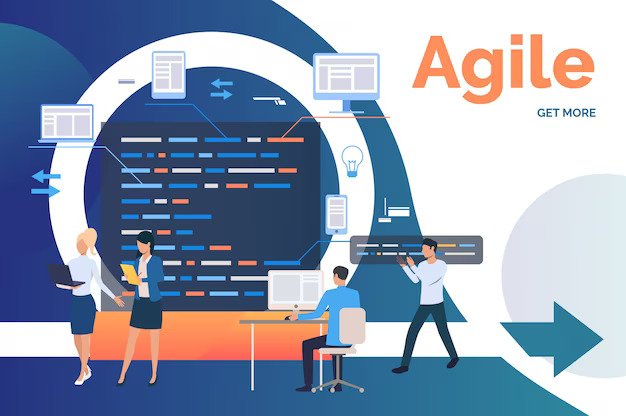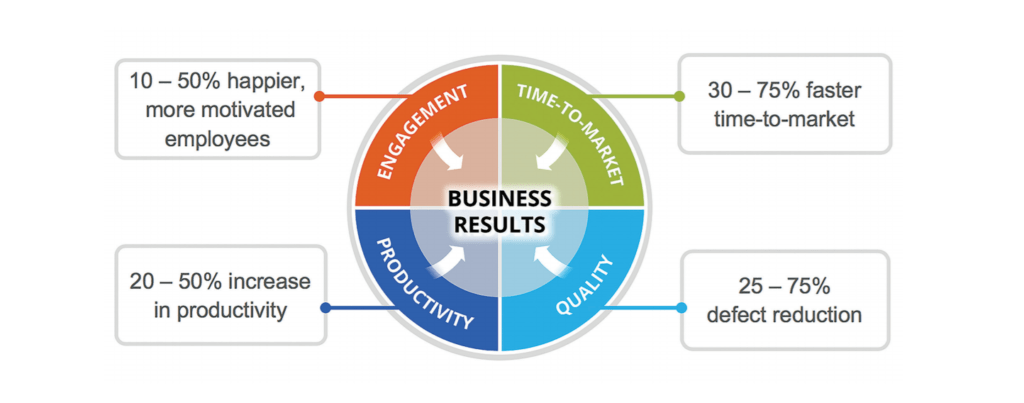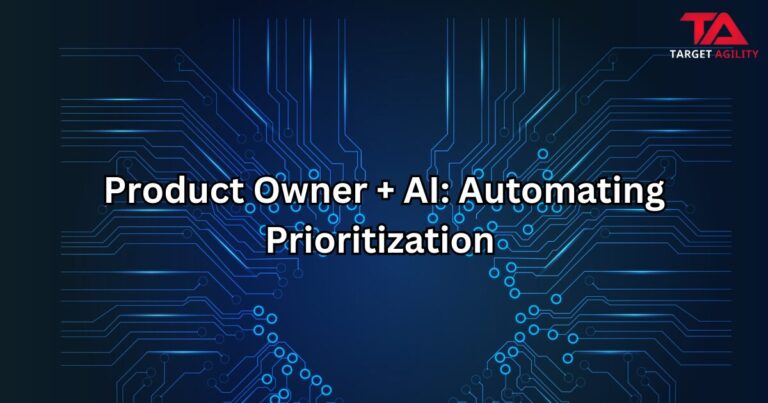In today’s dynamic and fast-paced business landscape, staying ahead of the game is essential for success. As industries continue to be reshaped by technology, organizations must adapt and embrace innovative methodologies that foster efficiency, collaboration, and innovation. Enter Scaled Agile – a revolutionary approach that is rapidly gaining momentum across various sectors. In this blog post, we will explore the rise of Scaled Agile and why it is crucial for every business leader to understand its immense potential. Get ready to unlock the secrets behind this transformative methodology that promises unprecedented success for your organization!
Demystifying Scaled Agile
In recent years, the concept of Scaled Agile has garnered increasing interest. But what exactly is Scaled Agile? At its core, Scaled Agile is a methodology that enables organizations to successfully implement agile principles at scale.
Clear communication and alignment across all levels of the organization, along with a focus on continuous improvement, are vital factors for the successful implementation of Scaled Agile. When executed correctly, it can enhance overall performance, efficiency, and cost-effectiveness for organizations. Moreover, it equips them with the agility to respond swiftly to market changes and customer demands. It is no surprise, then, that businesses of all sizes are embracing Scaled Agile.
The Advantages of Scaled Agile Frameworks
When it comes to software development, the Scaled Agile Framework (SAFe) has gained significant popularity. SAFe provides a set of guidelines and best practices for implementing agile methodologies within an enterprise. While traditional agile approaches like Scrum work well for small teams, they often struggle to scale up for large, complex projects. This is where SAFe shines.
The benefits of using SAFe include:
1. Enhanced efficiency and productivity: By eliminating unnecessary steps and processes, SAFe enables teams to work more efficiently, resulting in increased productivity and faster delivery times.
2. Risk reduction: Following best practices for agile at scale reduces the risk of project failures within enterprises.
3. Improved quality: Applying SAFe throughout the software development process ensures the delivery of higher-quality products to customers.
4. Greater agility: SAFe empowers enterprises to be more agile in their approach to software development, enabling them to respond swiftly to market conditions and customer needs.
5. Better alignment: SAFe facilitates a common goal and alignment between teams, fostering improved communication and collaboration among team members.
Providing Adequate Support for Teams Implementing Scaled Agile Practices
To successfully implement scaled agile practices, it is crucial to provide teams with sufficient support. Establishing a robust and comprehensive support system is essential. This may involve offering training and development resources, as well as technical support staff to address any issues that arise.
Creating a culture of collaboration and knowledge sharing is another vital aspect of ensuring teams have the necessary support during the implementation of scaled agile practices. By fostering an environment where team members feel comfortable sharing ideas and working together to solve problems, and ensuring information is easily accessible, organizations can empower their teams for success.
Effective communication channels are also key to ensuring everyone understands what is happening and can provide feedback if needed. Formal channels, such as project management software, and informal channels, like team chat rooms or social media groups, contribute to a supportive environment for teams implementing scaled agile practices.
Choosing the Right Model for Your Team’s Needs
When it comes to scaled agile, there is no one-size-fits-all solution. The approach your team takes should align with the specific needs of your organization. Several models are available, each with its own advantages and disadvantages.
The most critical consideration is selecting a model that suits your team’s needs. Here are a few popular options:
1. Scaled Agile Framework (SAFe): SAFe is a well-known scaling framework designed to help large organizations implement agile practices at scale. It integrates lean, product development flow, Kanban, and XP into a single framework. SAFe has been battle-tested in some of the world’s largest organizations, but it requires a significant commitment from all involved parties.
2. Large Scale Scrum (LeSS): LeSS is another popular scaling framework designed for large organizations. It integrates lean and XP into a simplified framework compared to SAFe. While LeSS may have fewer available resources than SAFe, its simplicity makes it easier to understand and implement.
Real-World Examples of Successful Agile Transformations
In the business world, success speaks for itself. Let’s explore some real-world examples of organizations that have achieved successful agile transformations:
1. ING Direct: By transitioning from a waterfall model to an agile one, ING Direct accelerated their time to market. This shift enabled them to introduce new features and products faster while increasing customer satisfaction.
2. Ford Motor Company: Ford adopted an agile development process for their SYNC 3 infotainment system and achieved impressive results. They delivered the system on time and within budget while improving quality and efficiency throughout the development process.
3. United Airlines: United Airlines embraced an agile development methodology and experienced significant improvements. Their website became more user-friendly, flights became more punctual, and overall customer satisfaction increased.
These renowned organizations serve as inspiration for businesses aiming to transform their operations with agile methodologies. If they can do it, so can you!
Key Considerations for a Smooth Transition
When transitioning to Scaled Agile, several key factors must be considered. Firstly, ensure a clear understanding of your organization’s specific goals and objectives. Define the desired outcomes you aim to achieve through this transition. Secondly, gain buy-in and commitment from all levels within the organization. Top-down support is crucial for successful implementation. Lastly, establish well-defined processes and protocols to structure and distribute work across teams. These three pillars are essential for a smooth and successful transition.
Common Pitfalls to Avoid
While implementing scaled agile, it is important to avoid common pitfalls. Trying to do too much too soon is a common mistake. It is advisable to start small and gradually scale up the implementation. Another potential pitfall is not having the right people in place. Ensure that you have a strong team committed to the transition to scaled agile. Without the right people, success can be challenging to achieve. Communication is also critical. Regularly keep everyone informed to prevent misunderstandings and frustration.
Conclusion
Scaled Agile is a transformative methodology that is here to stay, with an undeniable impact on organizations of all sizes. It offers improved collaboration, faster decision-making, enhanced operational visibility, and long-term cost savings. Business leaders must familiarize themselves with this revolutionary approach to work smarter and reap the promised rewards. Scaled Agile can propel your business ahead of competitors while ensuring unbeatable customer service – a win-win situation for all involved!











